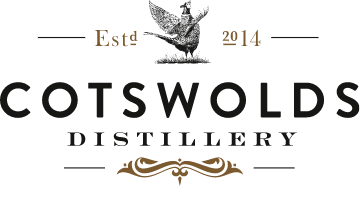Single Cask vs Single Malt Whisky: The Art of Whisky Blending
In the large and complex world of whisky, two important terms are "single cask" and "single malt." Many beginners use them as if they mean the same thing, but they are different. Each term shows a special way that the liquid is made. Both single cask and single malt whiskies are known for their high quality. When you learn the differences, you can start selecting age-worthy bottles.
Defining Single Malt Whisky
Single malt is a grain spirit made using 100% malted barley, produced at a single distillery, and aged for at least three years and one day in oak barrels. It’s revered for its expressiveness and ability to reflect nuances in terroir, production, maturation and cask blending. Single malt whisky barrels can be blended in-house to achieve a balanced flavour profile.
There is so much flavour diversity within the single malt category that defining its characteristics would be impossible. However, malt whiskies are produced in a special way that packs them with complexity and flavour, even before they go into barrels for maturation. Double batch distillation in copper pot stills retains a lot of flavour compounds compared to grain or Irish whisky. Then, during maturation, single malt exchanges flavours with the seasoned oak – adding more even more character. Finally, a mater blender builds a harmonious liquid by mixing liquid from different barrels.
What are Single Cask, Double Cask and Triple Cask Whiskies?
Whisky naming conventions can be slightly confusing. Many assume that single malt is synonymous with single barrel whisky because no blending should occur. However, as long as all of the malt whiskies of a blend are from the same distillery, it can be still be considered a single malt.
Single cask whiskies are a little different. In this case, there can be no blending with other casks – even from the same distillery. Some whisky collectors see single barrel expressions as the epitome of the single malt category because the flavours from that particular barrel, cannot be replicated in any other batch. There are usually only ever 300-600 bottles to a cask so each one is a true rarity.

Double cask whiskies are the most common type of single malt. It usually means that single malts from two types of barrels have been artfully blended together for the ultimate tasting experience. You’ll typically encounter double cask whiskies that combine Sherry cask and Bourbon cask single malt. Bourbon casks add vanilla, caramel, toasted marshmallow and baking spice. Sherry casks add fruitiness, nuttiness and hints of honey.
Explore the difference between single malt and double malt whisky
Triple cask whiskies typically blend the big three – wine casks, Bourbon casks and Sherry casks. Ex red wine casks offer more savoury notes such as leather, tobacco, mushroom and cocoa. Mulling spices (clove and star anise) and herbaceous accents are more common.
What is Special About Single Cask Whisky?
Single cask whiskies are special because of their rarity, exclusivity and uniqueness. The nuances of a single barrel whisky can’t be replicated. Even if you use the same spirit, the same barrel seasoning, or even the exact same barrel. There are unique qualities added by every maturation period.
The flavour profile of a single cask whisky reflects the wood and its seasoning. The main types of oak barrels are European oak – typically recycled from wine production – and American oak – typically recycled from Bourbon production.
First-fill barrels impart the most flavour from the previous seasoning, second-fill barrels will be more subtle. The flavour diminishes with each refill. We’ve already mentioned the common types of seasoning – wine, Sherry and Bourbon. However, English whisky production permits any barrel seasoning including rum, vermouth, Cognac or even maple syrup. Consider these factors when identifying characteristics in a bottle of single cask whisky.
Buying a bottle of limited edition or single barrel whisky is a great investment because the rarity and exclusivity means these bottles increase in value over time. You can also purchase an entire cask of whisky and leave it to mature in with us for up to ten years, enjoying a sample every year. Bottle it whenever you want.
Explore whisky investment opportunities

Are single cask whiskies better than other whiskies?
While single cask whisky is deemed as the most refined and expressive of all single malts, there are some advantages to blending different cask expressions. Explore the pros and cons of single barrel whisky vs single malt.
| Single Cask | Single Malt | |
| Pros |
|
|
| Cons |
|
|
Try Cotswolds Single Malt Whisky
The Art of Blending Single Malt Whisky Casks
Single cask whiskies focus on the unique taste of one barrel. However, blending single malt casks is also a valued skill. Master distillers use their experienced taste to pick and mix whiskies from different casks. They do this to create a smooth and steady flavour profile unique to their brand.
Techniques for Harmonising Flavour
Master distillers see blending as an art. They taste and smell samples from many casks to learn about their unique traits. They want to see how each part can add to the final mix.
The aim is to balance the flavours, not to hide them. This creates a mix of smells and tastes that is better than each part alone. With exact measurements and a good sense of flavours, these skilled makers create single malt whiskies known for their balance and complexity.
The Role of Ageing in Blending
The maturation process is very important for blending single malt. When whisky ages in oak casks, it mixes with the wood. This extracts flavours like vanilla, spice, and tannins. How long the whisky ages and the type of oak used greatly affects its flavour.
Master blenders think carefully about these details. They choose casks of different ages and types of oak to get the flavour they want. For example, younger whiskies can add bright fruit flavours, while older ones bring depth and richness. The skill is in mixing these factors to create a balance.
What is Cask Finishing?
Cask finishing is a method used to improve the taste of single malt whisky. In this process, the liquid is moved from its first cask to a second cask for more ageing. This second cask may have a different seasoning from the first so even single barrel whiskies can complexify further.
The time spent in the second cask can be anywhere from a few months to several years, based on how strong you want the flavour to be. More distilleries are using cask finishing these days to create limited editions and explore new flavour combinations.
How to choose a single cask whisky - Demystifying Labels
Selecting the perfect investment bottle, cask or special occasion single malt is a crucial decision. There are several things you’ll want to consider, the age, the barrel seasonings the type of oak and the barrel’s use level. Explore our handy guide to barrel influences.
Seasoning
- Red wine: recycled barrels from wine production are usually European oak and add flavours such as red fruits, dark chocolate, clove, herbs, leather and tobacco. Try red wine cask whisky.
- Bourbon: typically American oak barrels, ex-Bourbon barrels offer vanilla, cereal, toast, cinnamon and cinnamon. Try Bourbon cask single malt.
- Sherry: Ex-Sherry casks express raisins, dried apricots, citrus, honey and gooseberries, Pedro Ximenez Sherry casks will add much more sweetness than Olorosso Sherry casks. Try Sherry cask single malt.
- Other: Dessert wines, other spirits or even non-alcoholic liquids will have a totally unique influence on the final product, adding to your bottle’s exclusivity. Try peated cask or Pineau de Charentes cask whisky.
Oak type
- American: If you enjoy sweet vanilla, cinnamon and toffee, opt for American oak. You’ll be safe with a Bourbon barrel but some wines are aged in American oak.
- European: Earthy and savoury flavours come from European oak. You should be safe with wine or Sherry casks here. Avoid casks from Californian wine production as these will use American oak.
- Other: Japanese whisky uses Japanese oak which offers vanilla, citrus peel and floral notes – a delicate alternative.
Barrel use level
- Virgin: the woodiest expressions come from virgin casks (that have never been used to age anything). They’re very rarely used to age single malt and can be overpowering.
- First fill: These exchange the most flavour with the previous seasoning so if you want to taste the previous liquid choose first fill. These are the first whiskies aged in a pre-seasoned barrel.
- Second-fill: Milder but also very expressive, these whiskies are aged after first fill whiskies have taken on much of the barrel seasoning. These can be preferable for tasting more that the base spirit has to offer.
- Refill: any whisky matured after a second fill is classified as a refill. These offer more subtle barrel influences and can be desirable for more expressive single malts such as those from the Cotswolds Distillery. Some casks can be used for 60 years from virgin to final fill.
- Cask Finishing: single cask expressions can be transferred into a differently seasoned barrel to combine flavours without blending. Consider how this could affect the flavour of your single malt.
The significance of age statements in single cask whisky
The longer a whisky matures, the more it exchanges with the barrel. The oak can mellow our sharper notes and add desirable ones. With a blended single malt, whiskies of varying ages can be leveraged to add complexity (young spirits for vibrancy and older ones for richness). Single barrel expressions can’t offer a similar dynamic.
In the warmer climate of the Cotswolds, our whisky matures faster, so age statements aren’t always an indication of quality. If you’re interested in understanding how flavours evolve during maturation in our distillery, consider investing in your own cask of single malt. You can bottle it when it reaches perfection or leave it for up to ten years before selling it on at a premium.
Frequently Asked Questions
What Makes Single Cask Whisky Unique Compared to Single Malt?
Single cask whisky gives you a look into the unique character of the distillery. It has a rich depth of flavour that comes from just one cask. On the other hand, single malt is made by mixing whisky from different casks to ensure a consistent taste.
How Do I Start Collecting Single Cask or Single Malt Whisky?
Firstly, you’ll want to select a distillery producing consistent quality and a unique flavour. Then keep an eye out for limited edition whiskies and single barrel expressions – they'll sell quickly so sign up to an email list to stay in the loop. Anything unique is worth collecting, alternative barrel seasonings are a great place to start.
Get exclusive benefits – Join our whisky club
Can Single Cask Whisky Be Blended at Home?
Home blending single cask whisky can be done, but it is not the best idea. This is because it is hard to match the flavour profile of a whisky that is blended by professionals. It would probably be a waste of money buying a single barrel whisky just to blend it amateurly.
Why Is Single Cask Whisky Often More Expensive?
The availability of single cask whiskies is low. This, along with the special maturation process, usually longer maturation periods and small-scale production, makes them more expensive. The uniqueness creates more demand, thus adding a premium.
What to read next
Comparing single malt and single grain whisky

